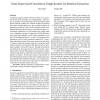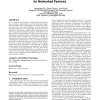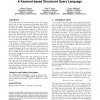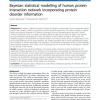66 search results - page 12 / 14 » Learning to Explain Entity Relationships in Knowledge Graphs |
CG
2000
Springer
14 years 2 months ago
2000
Springer
Abstract. Over the years, various research projects have attempted to develop a chess program that learns to play well given little prior knowledge beyond the rules of the game. Ea...
SDM
2011
SIAM
13 years 18 days ago
2011
SIAM
Extracting semantic relations between entities is an important step towards automatic text understanding. In this paper, we propose a novel Semi-supervised Convolution Graph Kerne...
CIKM
2010
Springer
13 years 7 months ago
2010
Springer
In the standard formalization of supervised learning problems, a datum is represented as a vector of features without prior knowledge about relationships among features. However, ...
SIGMOD
2010
ACM
13 years 10 months ago
2010
ACM
Automated extraction of structured data from Web sources often leads to large heterogeneous knowledge bases (KB), with data and schema items numbering in the hundreds of thousands...
BMCBI
2010
13 years 10 months ago
2010
Background: We present a statistical method of analysis of biological networks based on the exponential random graph model, namely p2-model, as opposed to previous descriptive app...




